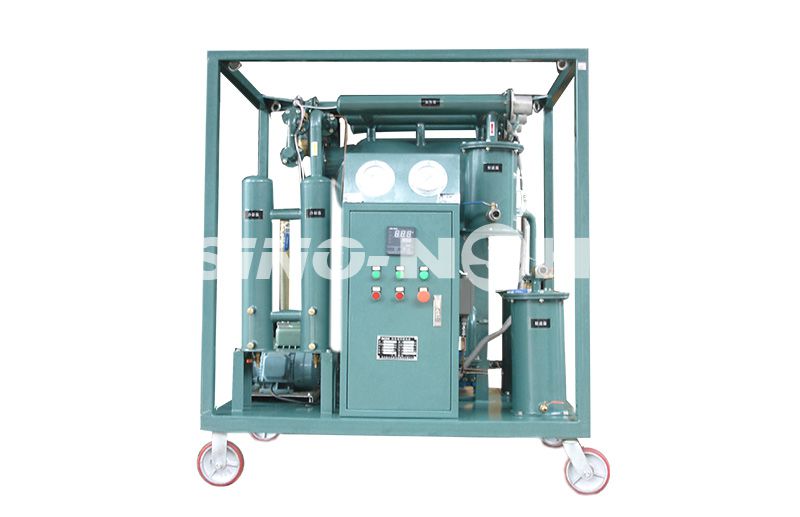E-mail seo@sino-purification.com

Time:2025-01-10 10:47:12 Reading volume:
Recycling transformer oil is an important process to ensure the safe disposal and reuse of oil used in electrical transformers. Transformer oil, often mineral oil or a synthetic alternative, is an insulator and coolant in electrical transformers. Over time, it can degrade due to heat, moisture, and contamination. Proper recycling helps minimize environmental impact and allows for the oil to be purified and reused.

Here are the general steps involved in recycling transformer oil:
1. Drain and Collect the Used Oil
- Safety Measures: Before any handling, ensure safety by wearing protective gear (gloves, goggles, and aprons) to avoid direct contact with the oil.
- Drain the Oil: The used transformer oil is drained from the transformer tank into a suitable container. Make sure the oil is cooled down to avoid burns.
- Check for Contaminants: Transformer oil may contain water, dust, metals, and other chemicals. These need to be separated in the recycling process.
2. Testing and Analysis
- Quality Check: A laboratory analysis is performed to assess the condition of the oil. Key parameters include dielectric strength, moisture content, acidity, and the presence of dissolved gases or solids.
- Contaminant Identification: The presence of PCB (polychlorinated biphenyls) in old oils can make the recycling process more complex. If PCBs are found, special handling procedures are required as they are toxic and regulated.
3. Filtration and Purification
- Filtration: This is a basic step where large particles and impurities are removed using mechanical filters or other filtration techniques.
- Degassing: Transformer oils can absorb gases like nitrogen and oxygen over time. These gases are removed through a degassing process, often involving heating the oil in a vacuum chamber.
- Dehydration: If water is present in the oil, it can be removed by applying heat and vacuum or through chemical desiccants that absorb moisture.
- Acid Neutralization: If the oil is acidic, neutralizing agents can be added to bring the pH back to neutral.
4. Reconditioning and Refining
- Vacuum Distillation: In this step, the oil is heated under a vacuum to separate volatile substances like moisture and light hydrocarbons, leaving behind purified oil.
- Clay Treatment: Activated clay or Fuller’s Earth can be used to remove any remaining impurities, especially color and oxidation products. The oil is filtered through this clay, which adsorbs contaminants.
- Polymerization Control: In some cases, transformer oils undergo a polymerization process. This can also be managed during refining to prevent further degradation of the oil.
5. Additives and Blending
- After refining, the oil may be blended with fresh oil or treated with additives to restore its insulating and cooling properties. Additives could include antioxidants to improve its lifespan and other chemicals to enhance its properties.
6. Repackaging and Testing
- The recycled oil is tested again to ensure it meets the required standards for use in transformers. This includes checking for dielectric strength, viscosity, and moisture content.
- Once the oil meets the standards, it can be repackaged and reused in transformers or other electrical equipment.
7. Disposal of Waste
- The waste generated during recycling, such as sludge, filter residues, and used chemicals, must be disposed of safely. This is typically done by licensed hazardous waste disposal facilities that comply with local regulations.
Key Considerations:
- Regulatory Compliance: Always ensure that the recycling process complies with local and international environmental regulations, especially if dealing with oils containing PCBs.
- Oil Type: Different types of transformer oils (mineral, synthetic, or biodegradable) might require slightly different recycling processes.
- Recycling Facilities: Specialized facilities with the necessary equipment and expertise are often required for transformer oil recycling. Some companies offer both collection and recycling services.
By following these steps, transformer oil can be effectively recycled, reducing environmental harm and extending the life of both the oil and the transformers it serves.